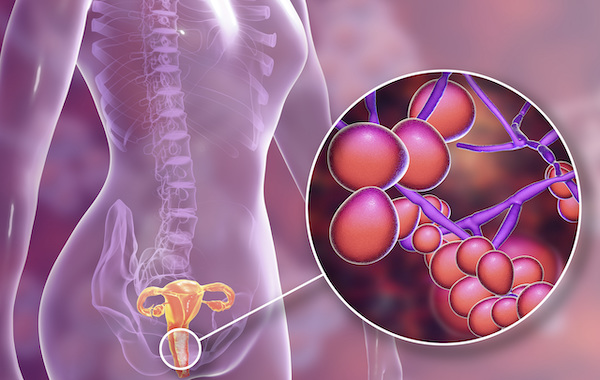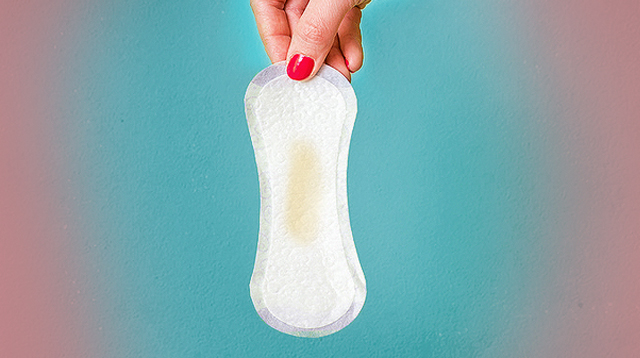What is an infection
An infection is the invasion and multiplication of harmful microorganisms, such as bacteria, viruses, fungi, or parasites, in a host organism’s body. Infections can range from mild to severe, and they can occur in any part of the body, such as the skin, respiratory tract, gastrointestinal tract, urinary tract, and bloodstream.
Infections can be transmitted through direct contact with an infected person or object, through the air, through ingestion of contaminated food or water, or through insect bites. Some infections can also be transmitted sexually.
Symptoms of an infection may include fever, fatigue, body aches, chills, cough, diarrhea, vomiting, and skin rash. The treatment of an infection depends on the type and severity of the infection, and it may involve the use of antibiotics, antiviral drugs, antifungal drugs, or other medications.
What is an infection in reproductive health?
In reproductive health, an infection can refer to any condition that results from the invasion and multiplication of harmful microorganisms in the reproductive system, including the vagina, cervix, uterus, fallopian tubes, ovaries, and testes.
Common reproductive infections in women include yeast infections, bacterial vaginosis, sexually transmitted infections (STIs) such as chlamydia, gonorrhea, and trichomoniasis, and pelvic inflammatory disease (PID). These infections can cause symptoms such as itching, burning, pain, discharge, and pelvic pain.
In men, common reproductive infections include STIs such as chlamydia, gonorrhea, and syphilis, as well as epididymitis, prostatitis, and orchitis. These infections can cause symptoms such as pain or swelling in the testicles, pain during urination or ejaculation, and discharge from the penis.
Reproductive infections can be transmitted through sexual contact with an infected partner, and some infections can also be spread through non-sexual means, such as sharing contaminated needles or coming into contact with contaminated bodily fluids. Treatment for reproductive infections varies depending on the type and severity of the infection and may involve the use of antibiotics, antiviral drugs, antifungal drugs, or other medications.

Are abortion patients more likely to get infections?
Abortion, like any medical procedure that involves breaking the skin or entering the body, carries a risk of infection. However, with modern techniques and proper medical care, the risk of infection from abortion is generally low.
Infection after abortion is rare but can occur, particularly if the procedure is not done in a sterile environment or if the patient does not receive appropriate follow-up care. Signs of infection after an abortion may include fever, abdominal pain, heavy bleeding, foul-smelling discharge, and flu-like symptoms.
Women who have had multiple abortions or who have certain medical conditions, such as HIV, may be at higher risk for infection after abortion. It is important for patients to inform their healthcare provider of any medical conditions they have or any medications they are taking before undergoing an abortion.
To minimize the risk of infection after an abortion, patients should follow all post-operative instructions provided by their healthcare provider, including keeping the genital area clean and dry, avoiding sexual intercourse, and seeking medical attention if any signs of infection arise.
Symptoms
Vaginal itching.
Vaginal itching is a common symptom that can be caused by a variety of factors, including infections, allergies, hormonal changes, and skin conditions. Some of the most common causes of vaginal itching include:
- Yeast infections: These are caused by an overgrowth of yeast in the vagina and can cause itching, burning, and discharge.
- Bacterial vaginosis: This is a type of vaginal infection caused by an imbalance of bacteria in the vagina, which can cause itching, burning, and a fishy odor.
- Sexually transmitted infections: Certain sexually transmitted infections, such as chlamydia, gonorrhea, and trichomoniasis, can cause vaginal itching and other symptoms.
- Menopause: As estrogen levels decline during menopause, the tissues in the vaginal area can become dry and itchy.
- Allergic reactions: Allergies to soaps, perfumes, or other products can cause vaginal itching and irritation.
- Skin conditions: Certain skin conditions, such as eczema or psoriasis, can affect the skin in the genital area and cause itching.

If you are experiencing vaginal itching, it is important to contact your healthcare provider for an evaluation and appropriate treatment. Treatment will depend on the underlying cause of the itching and may involve medication, lifestyle changes, or other interventions. .
Itching after an abortion
Itching after an abortion is not uncommon and can be caused by a variety of factors, including healing tissue, hormonal changes, and vaginal infections.
Itching due to healing tissue is normal after an abortion, as the body works to repair the damaged tissue. This itching may be accompanied by mild discomfort or pain and should resolve on its own within a few days to a few weeks.
Hormonal changes can also cause itching after an abortion. The sudden decrease in pregnancy hormones can cause dryness and irritation in the vaginal area, which can lead to itching. This type of itching may be relieved with over-the-counter moisturizers or lubricants.
In some cases, itching after an abortion may be a sign of a vaginal infection, such as a yeast infection or bacterial vaginosis. These infections can cause itching, burning, and unusual discharge. If you suspect you may have an infection, it is important to contact your healthcare provider for an evaluation and appropriate treatment.
If you are experiencing persistent or severe itching after an abortion, or if you have any concerns about your recovery, it is important to contact your healthcare provider for advice and guidance.
Vaginal burning
Vaginal burning can be caused by a variety of factors, including infections, irritants, allergies, hormonal changes, and skin conditions. Some of the most common causes of vaginal burning include:
- Yeast infections: These are caused by an overgrowth of yeast in the vagina and can cause itching, burning, and discharge.
- Bacterial vaginosis: This is a type of vaginal infection caused by an imbalance of bacteria in the vagina, which can cause burning, itching, and a fishy odor.
- Sexually transmitted infections: Certain sexually transmitted infections, such as herpes or chlamydia, can cause vaginal burning and other symptoms.
- Allergic reactions: Allergies to soaps, perfumes, or other products can cause vaginal burning and irritation.
- Menopause: As estrogen levels decline during menopause, the tissues in the vaginal area can become dry and irritated, which can cause burning or discomfort.
- Chemical irritants: Certain chemicals in soaps, detergents, or other personal care products can irritate the delicate tissues in the vaginal area and cause burning or discomfort.

If you are experiencing persistent or severe vaginal burning, it is important to contact your healthcare provider for an evaluation and appropriate treatment. Treatment will depend on the underlying cause of the burning and may involve medication, lifestyle changes, or other interventions.
Vaginal Burning after an abortion
Burning after an abortion can be caused by a variety of factors, including inflammation, infection, or trauma to the genital area during the abortion procedure.
Inflammation and irritation are common after an abortion, as the body works to heal the damaged tissue. This can cause burning or stinging sensations in the vaginal area, which should subside over time as the tissues heal.
In some cases, burning after an abortion may be a sign of infection. Infections after abortion are rare, but can occur if the procedure is not done in a sterile environment or if the patient does not receive appropriate follow-up care. Signs of infection after an abortion may include fever, abdominal pain, heavy bleeding, foul-smelling discharge, and flu-like symptoms.
Trauma to the genital area during the abortion procedure can also cause burning or discomfort. This is more common with certain types of abortion procedures, such as surgical abortions, which may cause more trauma to the tissues.
If you are experiencing persistent or severe burning after an abortion, or if you have any concerns about your recovery, it is important to contact your healthcare provider for advice and guidance. They can evaluate your symptoms and provide appropriate treatment or referrals as needed.
Vaginal discharge
Vaginal discharge is a normal part of the body’s functioning and serves to keep the vaginal area clean and moist. The amount, color, and consistency of vaginal discharge can vary depending on a variety of factors, including menstrual cycle, hormonal changes, sexual activity, and pregnancy. However, certain types of vaginal discharge can indicate an underlying health issue.
Here are some types of vaginal discharge and what they may indicate:
- White or clear discharge: This is typically normal and may increase in amount around the time of ovulation.
- Thick, white, or clumpy discharge: This may be a sign of a yeast infection.
- Thin, gray, or white discharge with a foul odor: This may be a sign of bacterial vaginosis.
- Green, yellow, or gray discharge: This may be a sign of a sexually transmitted infection, such as trichomoniasis.
- Bloody discharge: This may be a sign of irregular bleeding or an infection, and should be evaluated by a healthcare provider.

If you are experiencing unusual vaginal discharge or have any concerns about your vaginal health, it is important to contact your healthcare provider for an evaluation and appropriate treatment. Depending on the underlying cause of the discharge, treatment may involve medication, lifestyle changes, or other interventions.
Vaginal discharge after an abortion
After an abortion, it is normal to experience some vaginal discharge as the body heals and recovers. The amount, color, and consistency of the discharge may vary depending on the type of abortion procedure you had and how far along you were in your pregnancy.
In the first few days after an abortion, you may experience heavy bleeding and discharge, which may be bright red in color. This is normal and is typically due to the body shedding the uterine lining.
After the initial period of heavy bleeding, you may experience a light or moderate amount of vaginal discharge, which may be brownish or pinkish in color. This is also normal and is typically due to the body continuing to expel tissue and blood from the uterus.
If you are experiencing heavy bleeding or unusual vaginal discharge after an abortion, or if you have any concerns about your recovery, it is important to contact your healthcare provider for advice and guidance. They can evaluate your symptoms and provide appropriate treatment or referrals as needed. Additionally, if you notice any signs of infection, such as fever, abdominal pain, foul-smelling discharge, or flu-like symptoms, it is important to seek medical attention right away, as infections after an abortion can be serious if left untreated.
Pelvic pain
Pelvic pain is a common symptom that can have many different causes. It is defined as pain or discomfort in the lower abdominal or pelvic area, and can be acute or chronic, mild or severe.
Some common causes of pelvic pain include:
- Menstrual cramps: Many women experience mild to moderate pelvic pain or cramping during their menstrual cycle.
- Ovulation: Some women experience pelvic pain or discomfort during ovulation.
- Endometriosis: This is a condition in which the tissue that lines the uterus grows outside of it, which can cause pelvic pain, heavy periods, and infertility.
- Pelvic inflammatory disease (PID): This is an infection of the reproductive organs that can cause pelvic pain, fever, and unusual vaginal discharge.
- Urinary tract infections (UTIs): These infections can cause pelvic pain or discomfort, as well as burning with urination and frequent urges to urinate.
- Fibroids: These are noncancerous growths in the uterus that can cause pelvic pain or discomfort, heavy menstrual bleeding, and other symptoms.
- Ectopic pregnancy: This is a pregnancy that occurs outside of the uterus, typically in the fallopian tube, and can cause pelvic pain, vaginal bleeding, and other symptoms.

If you are experiencing pelvic pain, it is important to contact your healthcare provider for an evaluation and appropriate treatment. Treatment will depend on the underlying cause of the pain and may involve medication, lifestyle changes, or other interventions.
Pelvic pain after an abortion
Pelvic pain after an abortion is not uncommon and can be due to a variety of factors related to the procedure. In most cases, the pain is mild and resolves on its own within a few days to a week. However, in some cases, it may be a sign of a more serious complication and requires medical attention.
Some potential causes of pelvic pain after an abortion include:
- Cramping: It is normal to experience some cramping or discomfort after an abortion as the uterus contracts to expel any remaining tissue.
- Infection: Infection is a potential complication of any medical procedure, including abortion. Signs of infection may include pelvic pain, fever, and foul-smelling discharge.
- Retained tissue: In rare cases, some tissue may be left behind in the uterus after an abortion, which can cause pelvic pain and other symptoms.
- Perforation: In rare cases, the instruments used during a surgical abortion can perforate the uterus or other organs, which can cause severe pain and other symptoms.
If you are experiencing persistent or severe pelvic pain after an abortion, or if you have any concerns about your recovery, it is important to contact your healthcare provider for advice and guidance. They can evaluate your symptoms and provide appropriate treatment or referrals as needed.
Signs of infection
Signs of infection after an abortion may include:
- Fever of 100.4°F (38°C) or higher
- Chills or sweats
- Foul-smelling vaginal discharge
- Abdominal or pelvic pain that is severe or worsening
- Heavy bleeding that lasts longer than two weeks
- Pain or discomfort during sexual intercourse
- Nausea or vomiting
- Painful or difficult urination
If you experience any of these symptoms after an abortion, it is important to contact your healthcare provider right away. Infections after an abortion can be serious and require prompt treatment. Your healthcare provider may want to evaluate you to rule out an infection and provide appropriate treatment. If left untreated, infections can cause long-term complications, such as infertility, so it is important to seek medical attention as soon as possible.
Foul-smelling vaginal discharge
A strong odor in the vaginal area can be uncomfortable and embarrassing, but it’s important to remember that it’s a common problem that many people experience at some point in their lives.
There are several reasons why you may be experiencing a strong odor in your vagina. Some common causes include:
- Bacterial vaginosis: This is a common vaginal infection that occurs when there’s an overgrowth of bacteria in the vagina. Symptoms include a strong, fishy odor, as well as discharge and itching.
- Yeast infection: A yeast infection is another common vaginal infection that can cause a strong odor, as well as itching, burning, and white, cottage cheese-like discharge.
- Trichomoniasis: This is a sexually transmitted infection (STI) that can cause a strong, unpleasant odor, as well as itching, burning, and discharge.
- Poor hygiene: If you’re not washing your vaginal area regularly, or if you’re using scented soaps or douches, this can disrupt the natural balance of bacteria in the vagina and cause an odor.
- Sweating: Excessive sweating in the vaginal area can lead to a strong odor, especially if you’re wearing tight clothing or synthetic fabrics.
If you’re experiencing a strong odor in your vagina, it’s important to see a healthcare provider for an evaluation. They can help determine the underlying cause and recommend appropriate treatment. In the meantime, you may want to avoid scented products and wear breathable, cotton underwear to help reduce the odor.
Foul-smelling vaginal discharge after an abortion
After an abortion, it’s common to experience some changes in vaginal odor due to hormonal fluctuations and changes in vaginal discharge. However, if the odor is strong or unpleasant, it’s important to see a healthcare provider for an evaluation to rule out any potential infections or complications.
Infections after an abortion are rare but can occur. Bacterial vaginosis and yeast infections, in particular, are common after an abortion and can cause a strong odor, as well as other symptoms like itching and discharge. In some cases, an infection after an abortion can lead to more serious complications, so it’s important to seek medical attention if you’re experiencing any symptoms.
Your healthcare provider may perform a physical exam and take a sample of your vaginal discharge to test for any infections. If an infection is found, they may prescribe antibiotics or antifungal medications to treat it.
In the meantime, you can help reduce the odor by practicing good hygiene, wearing loose-fitting clothing, and avoiding scented products. It’s also important to avoid sexual activity until you’ve been evaluated by a healthcare provider.
Foul smell during pregnancy
If you are pregnant and experiencing an unusual or strong odor in your vaginal area, it’s important to see a healthcare provider for an evaluation. While some changes in vaginal odor are normal during pregnancy, an unusual or strong odor could be a sign of an infection or other issue that needs to be addressed.
Bacterial vaginosis and yeast infections are common during pregnancy and can cause a strong odor, as well as other symptoms like itching and discharge. These infections can be treated with antibiotics or antifungal medications, which are generally safe to take during pregnancy.
It’s also important to practice good hygiene during pregnancy to reduce the risk of infection. This includes washing your vaginal area with warm water and mild soap, avoiding scented products, wearing clean and breathable underwear, and wiping from front to back after using the bathroom.
If you have any concerns about vaginal odor or other symptoms during pregnancy, it’s always best to talk to your healthcare provider. They can help determine the cause of the issue and recommend appropriate treatment to ensure the health of both you and your baby.

Yellow discharge during pregnancy
Yellow discharge during pregnancy can be normal or a sign of a problem, depending on the circumstances. It is important to pay attention to other symptoms you might be experiencing in addition to the discharge. Here are a few possible causes:
- Normal pregnancy discharge: During pregnancy, it is common to experience an increase in vaginal discharge due to hormonal changes. This discharge is usually thin, milky white, and doesn’t have a strong odor. However, the color can vary, and it’s not uncommon for it to be yellowish at times.
- Bacterial vaginosis: This is a common vaginal infection that can occur during pregnancy. It is caused by an overgrowth of bacteria in the vagina, and can cause a yellow or gray discharge, along with a fishy odor and itching or burning.
- Yeast infection: This is another common infection that can occur during pregnancy. It is caused by an overgrowth of yeast in the vagina and can cause a thick, white discharge that may look yellow.
- Sexually transmitted infection (STI): Some STIs, such as chlamydia and gonorrhea, can cause a yellowish discharge. If you suspect you might have an STI, it’s important to see a healthcare provider for testing and treatment.
If you are experiencing yellow discharge during pregnancy, it is important to talk to your healthcare provider to determine the cause and whether treatment is necessary. In some cases, no treatment is needed, but it is always better to err on the side of caution and get checked out.

Whitish discharge during pregnancy
Whitish discharge during pregnancy is common and can be a normal part of the pregnancy process. However, it’s important to pay attention to other symptoms you might be experiencing in addition to the discharge. Here are a few possible causes:
- Normal pregnancy discharge: During pregnancy, it is common to experience an increase in vaginal discharge due to hormonal changes. This discharge is usually thin, milky white, and doesn’t have a strong odor. It can also increase in amount as the pregnancy progresses.
- Yeast infection: This is a common infection that can occur during pregnancy. It is caused by an overgrowth of yeast in the vagina and can cause a thick, white discharge that may look like cottage cheese.
- Bacterial vaginosis: This is a common vaginal infection that can occur during pregnancy. It is caused by an overgrowth of bacteria in the vagina and can cause a thin, white or gray discharge, along with a fishy odor and itching or burning.
- Sexually transmitted infection (STI): Some STIs, such as chlamydia and gonorrhea, can cause a white discharge. If you suspect you might have an STI, it’s important to see a healthcare provider for testing and treatment.
If you are experiencing whitish discharge during pregnancy, it is important to talk to your healthcare provider to determine the cause and whether treatment is necessary. In some cases, no treatment is needed, but it is always better to err on the side of caution and get checked out.




